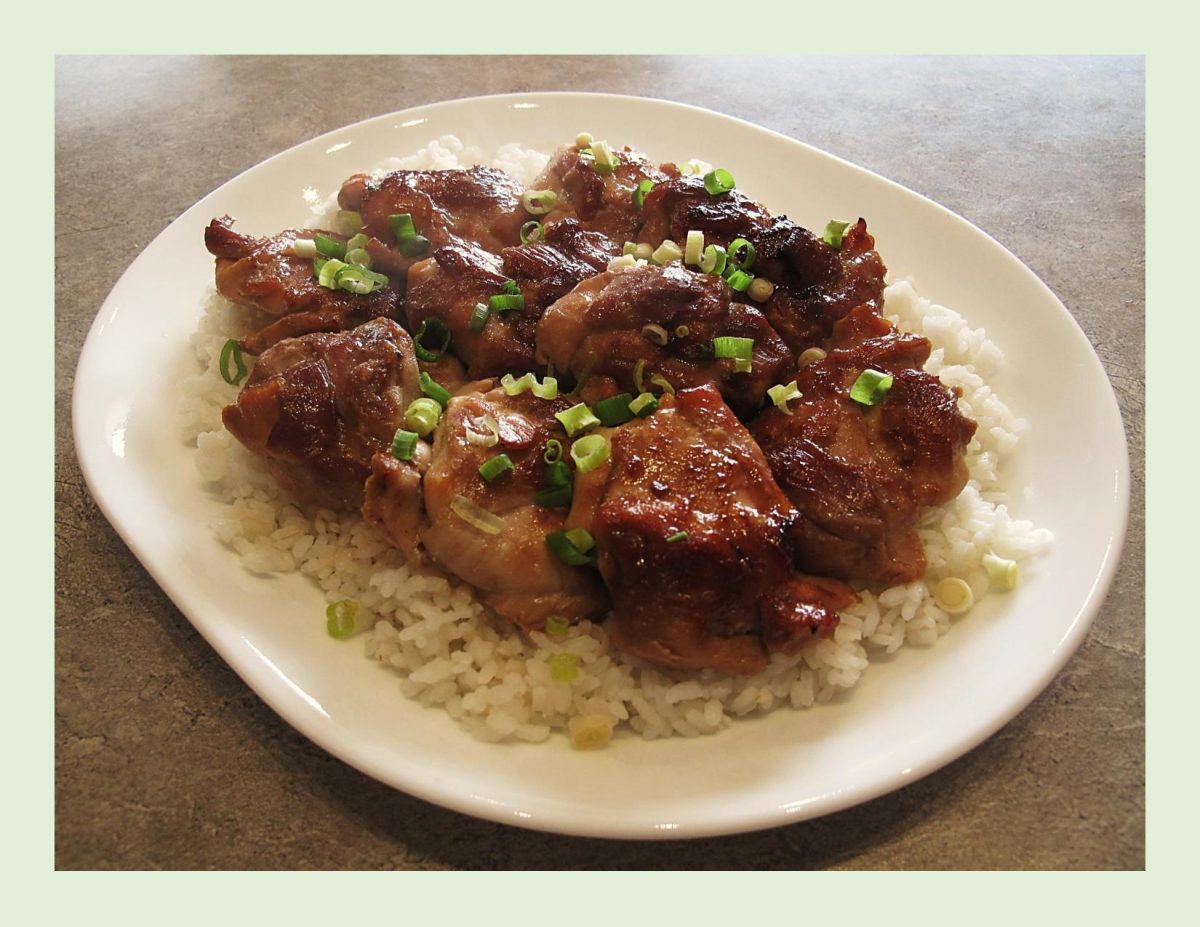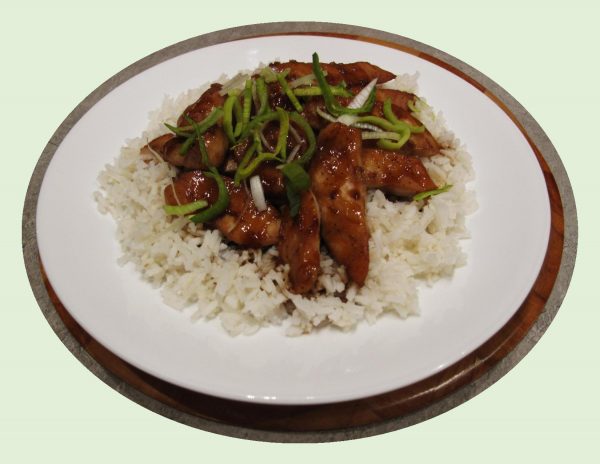
The term traybake seems to have two very different meanings. For example:
- A dessert baked in a square or rectangular pan and then cut into squares or slices after baking.
OR
- a savory dish consisting of several items of food being placed together on a baking tray along with some seasonings, then go into the oven together. With the right cut of meat and the right vegetables, they all are done at the same time. Dinner is served!
Life’s hustle and bustle can mean the last thing you want to worry about is fixing a busy dinner with multiple pots and pans…and having to clean it all up. The solution? Simple tray bakes. With minimal prep, basic ingredients, and little clean-up, this is surely one of the quickest ways to get dinner on the table (and takes less time than waiting for food to be delivered).
For the best success with this easy cooking technique, use your sturdiest pan (this will prevent your ingredients from browning too much) and have a bottle of your favorite oil cooking spray handy. Once you’ve assembled everything on the sheet pan, you can sit back, relax, and let the oven do the work for you.
When you’re roasting food, air circulation is everything. That’s why low-rimmed baking sheets are preferred over roasting pans. They accelerate cooking and boost browning in a traybake.
Traybake is the cooking technique of choice for these Chinese 5-spice chicken thighs. Simply load a sheet pan with chicken thighs that have been marinated in the spicy Chinese sauce, then you can just pop it in the oven and wait for the magic to happen. Serve over brown or white rice garnished with green onion.
Print Recipe
Sticky Chinese Five-Spice Chicken Traybake
Votes: 1
Rating: 5
You:
Rate this recipe!
|
|
Votes: 1
Rating: 5
You:
Rate this recipe!
|
Instructions
In a container with a cover, combine hoisin sauce, sesame oil, honey, five-spice powder, ginger, garlic & some salt & pepper.
Add chicken thighs to marinade & toss to coat. Cover & refrigerate for about 2 hours or overnight.
-
Arrange chicken thighs on a foil-lined baking sheet. Roast for 30-40 minutes until cooked through, basting at least once. If using cashews, remove chicken from oven & stir through chicken. Bake 5 minutes more.
Prepare rice while chicken is baking. Arrange on a platter & top with chicken thighs. Garnish with green onions.
Recipe Notes
- If you wish, garnish with some cashew nuts for extra flavor.

Despite the similarities in Asian cuisines, there are marked differences. Korean cuisine reflects a complex interaction of the natural environment and different cultural trends.
Korean food is bold, unique and well worth exploring. Strangely enough, it never has achieved the stature of Chinese food in North America and in recent years has been overtaken by Thai and Vietnamese.
Korean cuisine is largely based on meat, rice, vegetables and seafood. Dairy is fairly absent from the traditional diet.
The key ingredients needed in Korean cooking are garlic, fresh ginger, green onions, sesame seeds and oil, rice vinegar, brown sugar, soy sauce, dried red chilies and hoisin sauce. Each contributes to the oriental rule of five flavors: sweet, hot, sour, salty and bitter. Traditionally, Koreans also have tried to adhere to an arrangement of five colors in their meals: red, yellow, green, white and black.
Balancing flavor is both science and an art. The five taste elements build our overall perception of flavor. When each element is perfectly balanced, not only on the plate, but across the entire meal, its just amazing!
Print Recipe
Grilled Korean Chicken Tenders
Votes: 4
Rating: 5
You:
Rate this recipe!
|
|
Votes: 4
Rating: 5
You:
Rate this recipe!
|
Instructions
Place chicken tenders in a Ziploc bag. In a bowl, combine all marinade ingredients except green onion. Reserve 1/4 cup of the marinade & transfer the rest to the Ziploc bag with chicken. Refrigerate & marinate for at least an hour.
Over medium heat, grill the chicken tenders for 2-3 minutes or until they no longer stick to the grill. Turn the chicken, spoon reserved 1/4 cup marinade over tenders & grill an additional 2-3 minutes or until cooked through. Serve over rice & garnish with green onion.

Here on the Canadian prairies we have a native berry called a ‘Saskatoon’. These berries are very special …. the kind of special that only comes once a year.
Saskatoon berries look much like blueberries, but in fact are part of the rose family which includes apples, cherries, plums and of course roses. Saskatoons ripen in late June or early July. They grow in many conditions from sea level to mountain peaks and are less picky about soil conditions than blueberries. Trying to explain their flavor to anyone who has never tasted them is difficult and elusive. They’re sweet, dense, rich, seedy, slightly blueberryish, more almondish, a bit apple-y, dusky and deep. Like I said …. difficult to explain!
Throughout North America, saskatoon berries have a variety of names including: prairie berry, service berry, shadbush or juneberry.
Saskatoon berries work equally good in sweet treats as well as savory recipes. This pork tenderloin entrée is a good example of the latter.
Print Recipe
Honeyed Saskatoon Balsamic Pork Tenderloin
Votes: 3
Rating: 5
You:
Rate this recipe!
|
|
Votes: 3
Rating: 5
You:
Rate this recipe!
|
Instructions
Tenderloin/Stuffing
In a small bowl, combine panko crumbs, Parmesan, thyme, oregano, garlic & pepper.
Remove silverskin from tenderloin & 'butterfly'. Place meat between 2 sheets of plastic wrap & pound, making it all the same thickness. Spread mustard evenly on flattened cut side & top with 'stuffing'.
Preheat oven to 375 F. Starting with the long side, carefully roll the tenderloin as opposed to just folding it over.
Place a rack in a shallow roasting pan & lay a piece of foil on top creating sides for it. Lightly oil center of foil; place tenderloin on it & brush with Fig Balsamic Olive Oil Vinaigrette or just use olive oil. Roast for about 45 minutes until just a hint of pink remains.
Saskatoon Chutney
In a small saucepan over low heat, add 1 tsp oil & sauté green onions & ginger for a couple of minutes. Add honey, water, cider vinegar, cornstarch & salt; mix well. Add saskatoons; bring to a simmer & cook until chutney thickens slightly.
Slice roast tenderloin into medallions about 1-inch thickness. Pour some chutney onto serving platter; place sliced tenderloin medallions on top & drizzle with remaining chutney.







